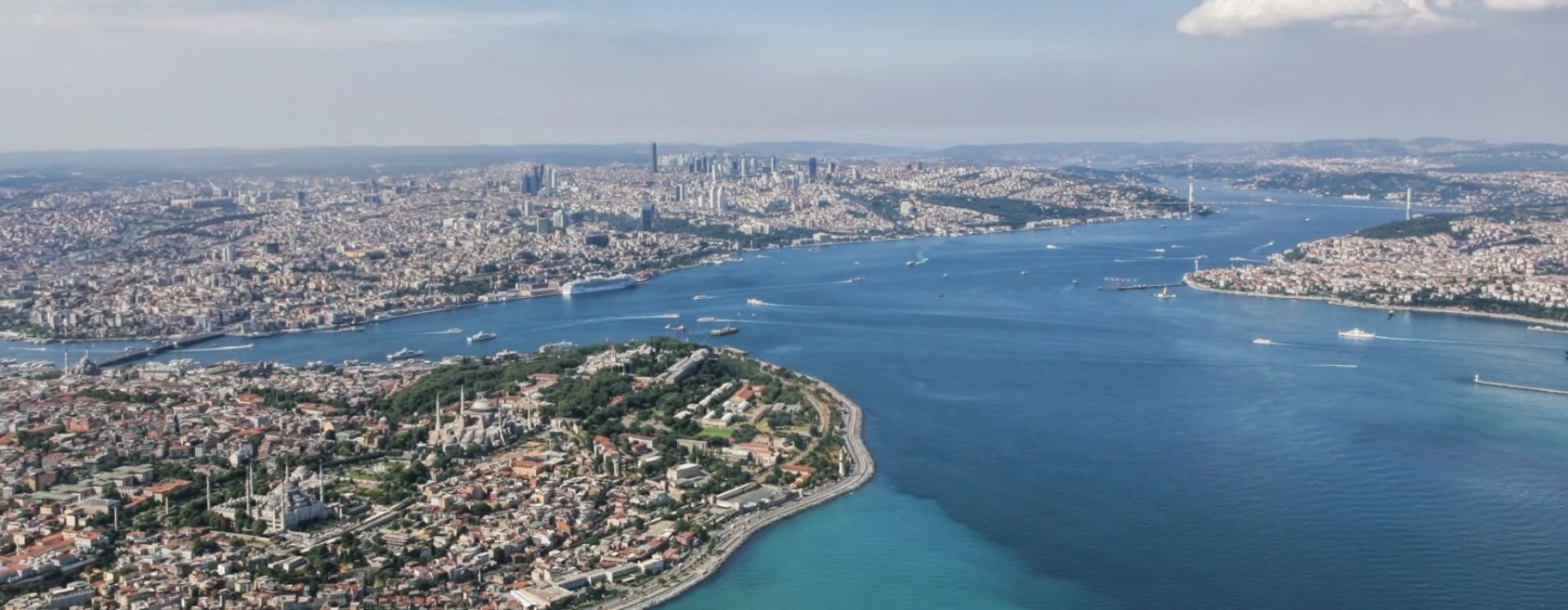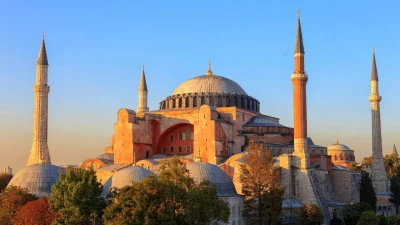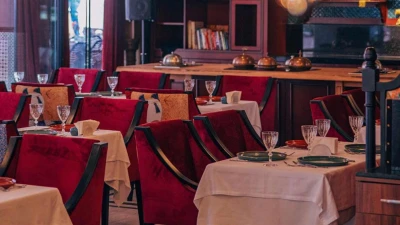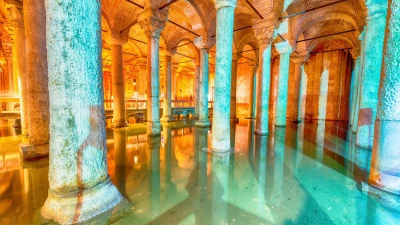
Guided Istanbul Tours
Discover It with a professional team
Popular Activities

Private Tour Guide
5 Hour
175.00 €

Old City Tour All Inclusive
5 Hour
150.00 €

Old City Tour with Lunch
5 Hour
125.00 €

3 Day Istanbul Highlights (Private)
2 Night 3 Days
600.00 €

Off The Beaten Track
5 Hour
125.00 €

Muslim Heritage Tour
5 Hour
90.00 €

Jewish Heritage Tour
5 Hour
90.00 €

Street Food Istanbul
5 Hour
90.00 €

Cooking A La Turka
5 Hour
125.00 €

Christian Heritage
5 Hour
90.00 €

Cats Of Istanbul
5 Hour
150.00 €

Car Hire With Driver
5 Hour
150.00 €

Authentic Istanbul
5 Hour
275.00 €

Airport-Hotel Transfer
60 Minute
50.00 €

Walking Tour Of The Old City
5 Hour
70.00 €

Viaport Marina Theme Park Tour
5 Hour
100.00 €

Masukiye Sapanca & Darıca Zoo
5 Hour
50.00 €

Whirling Dervish Show
2 Hour
45.00 €

Istanbul For Kids
5 Hour
90.00 €

Bosphorus Dinner Cruise
5 Hour
70.00 €

Greek Orthodox Remainings
5 Hour
80.00 €

Golden Horn Bike Tour
5 Hour
100.00 €

Golden Horn & Bosphorus
5 Hour
75.00 €

Byzantium Relics & Bosphorus
5 Hour
65.00 €

Bosphorus & Ottoman Relics
5 Hour
70.00 €

Dolmabahce Palace & Bosphorus
5 Hour
90.00 €

Green Bursa
5 Hour
80.00 €

Gobeklitepe Tour From İstanbul
1 Night 2 Days
450.00 €

Full Day Ephesus Tour From Kusadasi Pier
8 Hour
125.00 €

8 Days Wonderful Turkey
7 Night 8 Days
1,020.00 €

Turkey Package Tour 10 Days/9 Nights
9 Night 10 Days
1,699.00 €

Pamukkale Day Trip (By Plane)
8 Hour
275.00 €

Istanbul, Ephesus, Pamukkale Tour Package
3 Night 4 Days
700.00 €

Cappadocia & Pamukkale Tour From Istanbul (By Plane)
3 Night 4 Days
800.00 €

Göcek Tour(3Days)
2 Night 3 Days
500.00 €

Day Trip To Troy
8 Hour
120.00 €

Cappadocia Hot Air Balloon Tour
1 Hour
220.00 €

Seven Churches of the Revelation
4 Night 5 Days
900.00 €

Cappadocia Tour From Istanbul (By Plane)
1 Night 2 Days
375.00 €

Private Ephesus Tour From Izmir Port
8 Hour
135.00 €

Half Day Ephesus Tour From Kusadasi Pier
4 Hour
80.00 €

Private Yacht Tour
2 Hour
135.00 €

Daily Ephesus Tour
1 Day
399.00 €

Roman Cisterns Of Istanbul
5 Hour
125.00 €

Magic Istanbul
6 Hour
95.00 €

5 Hidden Corners of Istanbul
5 Hour
125.00 €

Private Old City Tour
6 Hour
135.00 €

Bosphorus & Continents Tour
6 Hour
90.00 €

Istanbul Segway Tour
3 Hour
69.00 €

Princess Islands
5 Hour
70.00 €

Private Guide & Vehicle
5 Hour
100.00 €

Best of Turkey Tour
7 Night 8 Days
1,500.00 €

Turkish Bath (Hammam)
2 Hour
75.00 €
Istanbul Tours

Old City Tour All Inclusive
5 Hour
150.00 €

Old City Tour with Lunch
5 Hour
125.00 €

Private Tour Guide
5 Hour
175.00 €

Golden Horn & Bosphorus
5 Hour
75.00 €

Turkish Bath (Hammam)
2 Hour
75.00 €

Byzantium Relics & Bosphorus
5 Hour
65.00 €

Bosphorus & Ottoman Relics
5 Hour
70.00 €

Best of Turkey Tour
7 Night 8 Days
1,500.00 €

Princess Islands
5 Hour
70.00 €

Bosphorus & Continents Tour
6 Hour
90.00 €

Masukiye Sapanca & Darıca Zoo
5 Hour
50.00 €

Private Old City Tour
6 Hour
135.00 €

Private Yacht Tour
2 Hour
135.00 €

Greek Orthodox Remainings
5 Hour
80.00 €

Dolmabahce Palace & Bosphorus
5 Hour
90.00 €

Private Guide & Vehicle
5 Hour
100.00 €

Muslim Heritage Tour
5 Hour
90.00 €

Jewish Heritage Tour
5 Hour
90.00 €

Istanbul Segway Tour
3 Hour
69.00 €

Viaport Marina Theme Park Tour
5 Hour
100.00 €

Istanbul For Kids
5 Hour
90.00 €

Off The Beaten Track
5 Hour
125.00 €

Authentic Istanbul
5 Hour
275.00 €

Roman Cisterns Of Istanbul
5 Hour
125.00 €

Magic Istanbul
6 Hour
95.00 €

5 Hidden Corners of Istanbul
5 Hour
125.00 €

Walking Tour Of The Old City
5 Hour
70.00 €

Street Food Istanbul
5 Hour
90.00 €

Cooking A La Turka
5 Hour
125.00 €

Christian Heritage
5 Hour
90.00 €

Cats Of Istanbul
5 Hour
150.00 €

Car Hire With Driver
5 Hour
150.00 €

Golden Horn Bike Tour
5 Hour
100.00 €

Airport-Hotel Transfer
60 Minute
50.00 €

3 Day Istanbul Highlights (Private)
2 Night 3 Days
600.00 €

8 Days Wonderful Turkey
7 Night 8 Days
1,020.00 €

Seven Churches of the Revelation
4 Night 5 Days
900.00 €

Turkey Package Tour 10 Days/9 Nights
9 Night 10 Days
1,699.00 €

Whirling Dervish Show
2 Hour
45.00 €

Bosphorus Dinner Cruise
5 Hour
70.00 €

Istanbul, Ephesus, Pamukkale Tour Package
3 Night 4 Days
700.00 €
Pamukkale Tours

Pamukkale Day Trip (By Plane)
8 Hour
275.00 €

8 Days Wonderful Turkey
7 Night 8 Days
1,020.00 €

Turkey Package Tour 10 Days/9 Nights
9 Night 10 Days
1,699.00 €

Istanbul, Ephesus, Pamukkale Tour Package
3 Night 4 Days
700.00 €

Best of Turkey Tour
7 Night 8 Days
1,500.00 €

Cappadocia & Pamukkale Tour From Istanbul (By Plane)
3 Night 4 Days
800.00 €
Ephesus Tours

8 Days Wonderful Turkey
7 Night 8 Days
1,020.00 €

Seven Churches of the Revelation
4 Night 5 Days
900.00 €

Turkey Package Tour 10 Days/9 Nights
9 Night 10 Days
1,699.00 €

Istanbul, Ephesus, Pamukkale Tour Package
3 Night 4 Days
700.00 €

Best of Turkey Tour
7 Night 8 Days
1,500.00 €

Private Ephesus Tour From Izmir Port
8 Hour
135.00 €

Half Day Ephesus Tour From Kusadasi Pier
4 Hour
80.00 €

Full Day Ephesus Tour From Kusadasi Pier
8 Hour
125.00 €

Daily Ephesus Tour
1 Day
399.00 €
Cappadocia Tours

8 Days Wonderful Turkey
7 Night 8 Days
1,020.00 €

Seven Churches of the Revelation
4 Night 5 Days
900.00 €

Turkey Package Tour 10 Days/9 Nights
9 Night 10 Days
1,699.00 €

Best of Turkey Tour
7 Night 8 Days
1,500.00 €

Cappadocia Hot Air Balloon Tour
1 Hour
220.00 €

Cappadocia Tour From Istanbul (By Plane)
1 Night 2 Days
375.00 €

Cappadocia & Pamukkale Tour From Istanbul (By Plane)
3 Night 4 Days
800.00 €
































Customer comments
The driver cum guide was truly experienced and certainly knows all the "hidden tresures" not usually found with the usual routes. His knowledge on the...
I has recently the pleasure of exploring the enchanting city of istanbul through the guidance of Emre. While this city is truly mesmerizing, my experi...
Emre took us on a wonderful tour of the Hagia Sophia, the Blue Mosque (and avoided all of the long lines) and several other locations and then gave us...
We had the best time in Istanbul and we credit our experience to our tour guide Emre. Emre was recommended by our dear friends who leave in Turkey and...
Our guide knows everything about Istambul history. He is very kind and made our tour unforgetable!! We felt very confortable sighseeinng with him. The...
Today we had our one day tour of Istanbul with Selim, it was great, top performing guide, knew all the shortcuts to make the most of our day! Highly r...
Undertook a bicycle history tour with Mazlum. It was incredibly interesting and informative and great to see Istanbul from a bike.
We had a one day tour with Emre. His kind personality, good willingness to learn us Turkish history and his great experience, made our day very specia...
Embre was one of the most outstanding guides I have met in the 108 countries I have traveled to. He is amazing. So accommodating for any needs or want...
Mr. Emre was very kind and showed us the main attractions of Istanbul in just a few hours. The tour all went very well, I recommend this Tour.
This was probably the best tour we have ever taken! Emre was so kind and helpful. His knowledge about Istanbul, its history, and his ability to answer...
The best tour experience I have ever had. From the beginning they were very kind and honest. During the tour always attentive to our needs, to our com...
We asked the guide to bring us out of the main tourist drags, which he did. He provided good comments, he was mindful of our pace (I take time to get...
I had an excellent day with Emre being taken on a tour of the religious and historic sites of Istanbul. We also went to the indoor bazaar, had lunch a...
The views were absolutely amazing,the tournament guide was very informative and we enjoyed thoroughly,would highly recommend!
Emre was a great guide. Good communication leading up to the tour, and then during the tour he gave great insights and facts! He is very experienced a...